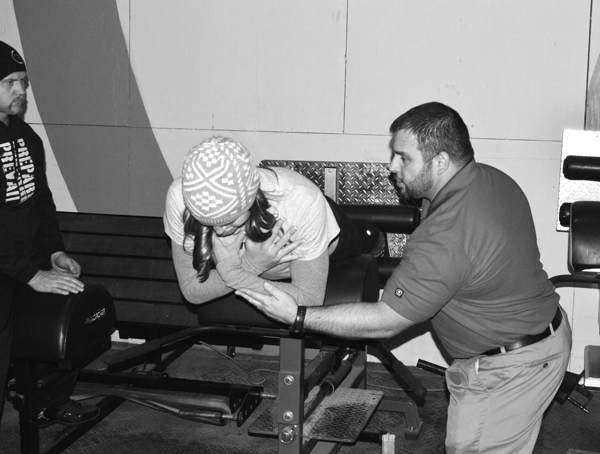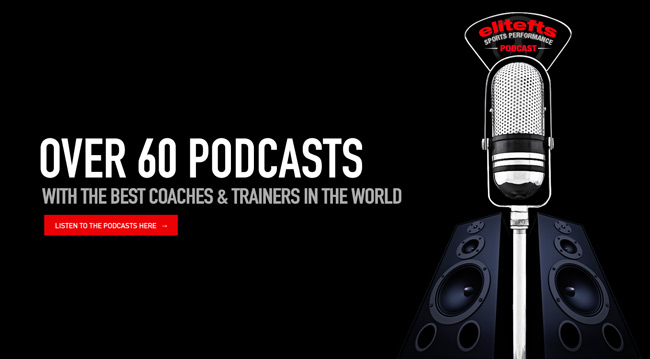
Back in March, Bryan Mann and I were tagged with a question in the Elitefts Q&A entitled: Making a coaching video for GA application?
To be included with Dr. Mann with anything is always an honor. I think we did a good job with giving this young man some advice.
Here's the Question:
I am interviewing for a graduate assistant position and they requested that I make a video of myself coaching another person on an Olympic lift and a squat movement. I am wondering if anyone has any guidelines on doing these? I'm assuming it should be fairly short, but any other guiding insights would be very helpful.
Bryan Mann's Answer:
I can only tell you what I would be looking for, but I am not the person doing the search. I would be looking for competence in teaching the movements, confidence in your ability and a personality that fits in with the staff. The competence and confidence will be pretty much universal, but the personality will vary by staff. The great thing about the personality being shown- if you don't fit what they want, you won't get the job and that's a good thing.
I'm sure they'll have instructions for uploading as well- if it's via dropbox, youtube, etc.
My Answer:
First of all, good luck to you during this process. I would like to reiterate what Coach Mann said. Confidence and Competence go hand in hand will be evident from the onset of the video.
I am not 100% sure what the requirements are, but here's what I think may work.
- Keep the video short. Aim for 4 minutes and no more than 6.
- Say more with less words. Don't try to impress with what you know, but by how you communicate.
- Don't perform the lift and coach it at the same time. Have someone stand in to demonstrate as you explain.
- Face the camera and talk directly to who is going to hire you. Have the athlete stand at 45 degrees. This is the best angle for most movements.
- Make sure your audio is solid. Be mindful of echoes from large rooms.
- Speak in bullet points of 3-4 to help you remember (don't use a note card) and to get your points across.
- Coach what you know. Don't try to coach what you've heard others say. Stay within your scope and experience.
- Be flexible with coaching cues. Give the ones you use, but communicate that you understand the concepts behind them. Give verbal and tactile cues when appropriate.
- Give short rationales behind cues. For example, if you want the athlete to "push their knees out" explain in a few words why. If you don't know why, stop using that cue... and not just for the video.
- Don't go over every variation possible. It will appear as fluff. You can, however give a few regressions for athletes with technical discrepancies, mobility issues, or injuries.
- Always be humble. They should get the impression you are confident in your ability but you understand your way is not the only way. That's easy if you are just being yourself. Unless you're an A-hole. Then it's harder. But you're not, so you're good.
I hope this helps. Best of luck all of you applying for a strength and conditioning position.
Anything I forgot? List any advice you have for young aspiring S&C coaches in he comment section.
If you have aspirations of becoming a college strength coach, may I suggest watching this free webinar?
How to Find a Strength & Conditioning Job
Articles by Mark Watts
Olympic Lifting for Athletes: Using Static Holds to Improve Technique
Head Games: Training the Neck to Reduce Concussions
The Fastest Sport on Ice: Things You Don't Know About Bobsled
Tips to Crush the Combine Tests
An In-Season Training Guide for Baseball Pitchers
Individual Training in a Team Setting
Off-Season Training for Football (with 8-Week Program)
What is Really Wrong with Strength and Conditioning
The Last Sports Performance Podcast
Olympic Lifting for Athletic Performance
Sports Performance Coach Education Series
WATCH: How to Find a Strength and Conditioning Job
WATCH: Becoming a Mentor to Young Coaches
WATCH: The Four-Step Coaching Process
WATCH: 5 Strategies to Perform More Work in Less Time
WATCH: Why Communication is Key to a Better Coaching Career
WATCH: A Better Way to Train High School Athletes
WATCH: How to Implement Auto-Regulatory Training in a Team Setting
WATCH: Pre-Workout Circuits to Optimize Training Time and Maximize Performance
WATCH: Hypertrophy Circuits for Athletes in a Team Setting
Coaches Clinics
WATCH: Two Bench Press Mechanical Drop-Sets for Hypertrophy
WATCH: Two Lateral Speed Drills with Bands to Improve Change of Direction
WATCH: Adjusting the Glute-Ham Raise to Optimize Your Training
WATCH: Basic Linear Speed Acceleration Drills in a Team Setting
WATCH: Kettlebell Training for Team Sports














